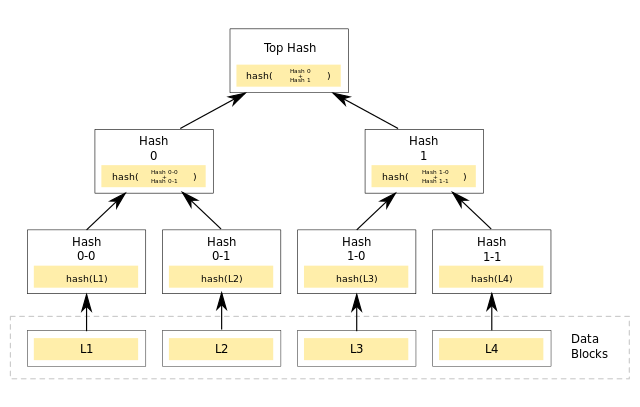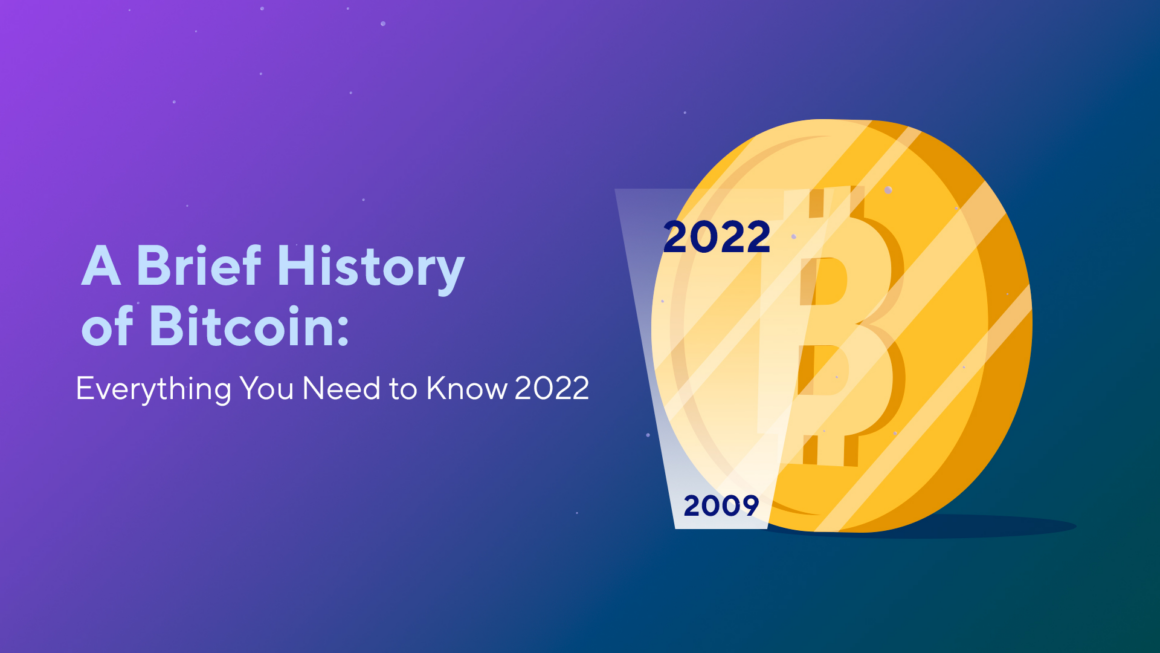Blockchain and cryptocurrencies are one of the fastest-growing areas. In just a decade after the technology was created, it has developed into a huge multi-million dollar industry, comparable only to the development of the Internet.
In this article, we will tell you how and when bitcoin appeared, what prerequisites existed before its creation, how the BTC rate changed over time, and what, according to experts, awaits it in the future. Let’s get started!
How Was Bitcoin (BTC) Created?
Bitcoin did not appear overnight at all. Its creation was preceded by 40 years of technological innovations and inventions. Let’s consider all the main steps, without which the cryptocurrency would never have seen the light of day:
-
- TCP/IP protocol (1974). Most of the Internet is now powered by it. The protocol laid the foundation for worldwide communication of nodes without the need for a central server or authority.
-
- Public-key cryptography (1976). For the first time, the ideas of public-key cryptography and digital signatures were presented, which today form the basis for commonly used security protocols on the Internet. Until 1976, traditional cryptography assumed that data exchange required a secure channel through which keys were transmitted.
-
- The RSA algorithm (1978). It’s the first real public key encryption system where public disclosure of the encryption key does not reveal the corresponding decryption key. Used to this day.
-
- The Denationalization of Money: The Argument Refined by Friedrich Hayek (1978). In fact, this book indicated the basics of the philosophy of bitcoin. The main thesis is that countries will eventually converge on one monetary standard instead of using an unlimited number of currencies, and private enterprises should also issue forms of money.
-
- Merkle tree (1980). It’s an improved concept of hash functions. The hash function takes data and converts it into a fixed number called a hash. The main property of this function is that if you change at least 1 bit of data, the result will be changed beyond recognition. But hash functions had weaknesses, and Merkle tree technology eliminated them, reducing the risk of hash spoofing. It is used when calculating the hash in each block.

-
- The Ethics of Liberty by Murray Rothbard (1982). It’s a radical theory against the state’s existence as a subject with a monopoly privilege to invade private property. The book greatly influenced the philosophy of the separation of money and state, which is central to the idea of Bitcoin.
-
- Blind Signatures for Untraceable Payments (1983). David Chaum defined the first-of-its-kind cryptocurrency as a technology that has three main properties: the inability of third parties to determine the recipient or other data about the payment; the ability of individuals to provide proof of payment; the ability to stop using means of payment that are identified as stolen.
-
- Untraceable Electronic Mail, Return Addresses and Digital Pseudonyms (1984). It’s an article by the same David Chaum that laid the foundation for research into anonymous communications.
-
- Elliptic-curve cryptography (1985). Today’s technology allows you to encrypt messages on the Internet, and its security depends on the size of the elliptic curve.
-
- The FLP impossibility (1985) was named after Fisher, Lynch, and Patterson. Bitcoin transactions are confirmed by reaching a consensus among network participants. Before 1985, developers of distributed systems claimed that asynchronous systems had absolute reliability, but it turned out that it was impossible to reach a consensus in them. By proving this, scientists won the Dijkstra Prize and opened the way to distributed consensus.
-
- The Crypto Anarchist Manifesto (1988). Crypto anarchy is an ideology that emphasizes political and economic freedom and privacy protection. Crypto anarchists use cryptographic software when sending and receiving information on a computer network.
-
- DigiCash (1989). It’s the first real electronic currency. It was created by the already mentioned David Chaum. The project worked for about 10 years and was closed both because of banks’ opposition and because of mistakes in doing business. However, it was an important impulse.

-
- The advent of the Internet and the first website (1990).
-
- Timestamps on digital documents (1991). In the bitcoin blockchain, the timestamp plays a crucial role: blocks are connected in ascending order of time, i.e., the earlier ones go first.
-
- PGP (1991). It’s an encryption program that provides cryptographic privacy and authentication for data transmission. When encrypted, the message looks like a meaningless set of characters. Only the specified recipient can decrypt it and read the message.
-
- Creation of the Cypherpunks group (1992). The group advocated the widespread use of cryptography and privacy technologies to bring about social and political change. The Cypherpunks have been working to create a global cryptocurrency and have definitely contributed in many ways, from politics to philosophy. In 1993 they released their manifesto.
-
- Creation of the first payment systems and their recognition by the government (1994-1996).
-
- The first description of smart contracts (1997). Author: Nick Szabo. Smart contracts are automatically executed when certain conditions are met — without any central supervision.
-
- Proof-of-Work (1997). It was described in an email from Adam Back and originally intended to be used to protect against email spam, but it is now a critical component of Bitcoin.

-
- BitGold (1998). It’s a mechanism proposed by Nick Szabo, a direct predecessor of the Bitcoin architecture, which was not implemented. In the same year, engineer Wei Dai proposed a similar b-money mechanism.
-
- Napster (1999). It’s the first P2P file-sharing software. Then, in 2001, the BitTorrent communication protocol appeared.
-
- Reusable Proof-of-Work (2004). RPOW was invented by Hal Finney, who wanted to prototype a digital money system and solve the issue of double-spending.
-
- The Big Crisis and Satoshi Nakamoto (2008). It’s all about the collapse of many large financial companies, the fall of currencies, and mass unemployment. On October 31, 2008, Satoshi Nakamoto published the Bitcoin White Paper.
Nakamoto developed the reference implementation of BTC and took part in the development until December 2010, after which he left the public space without revealing his identity.
Thus, Bitcoin is not a spontaneous invention but the culmination of many years of efforts by crypto enthusiasts, cypherpunks, and many engineers.
Who Is Bitcoin Creator Satoshi Nakamoto?
Satoshi’s last message on the BitcoinTalk thematic forum was published in December 2010. Despite dozens of attempts to declassify the developer’s identity, Nakamoto proved to be quite secretive. Several candidates have been proposed, but it is unlikely that any of them are really Satoshi Nakamoto:
-
- Dorian Nakamoto from California. The Japanese-American graduated from the physics department of the California Polytechnic Institute and was involved in defense projects. Dorian himself denied participation in the creation of bitcoin.
-
- Craig Wright is a scientist from Australia who, on the contrary, claimed that he was Satoshi Nakamoto. This assertion was soon called into question. Even the founder of Ethereum, Vitalik Buterin, who usually behaves more reservedly, publicly called Wright a fraudster. The scientist was involved in several lawsuits and lost them.
-
- Nick Szabo is the engineer and lawyer we mentioned earlier, who wrote an article about smart contracts in 1997 and then described the BitGold protocol. Dominic Frisbee, author of Bitcoin: The Future of Money, concluded that Szabo’s writing style is similar to that of Satoshi. In addition, both refer to the work of the economist Carl Menger.
There are many theories about who Satoshi Nakamoto really is, but there is no definitive answer yet, and it is not known if there ever will be.
By the way, Nakamoto uses the pronoun ‘we’ in the white paper, so perhaps even a whole team was involved in developing the concept.
How Did Bitcoin Become Popular?
Blockchain was launched a little later than the white paper was posted on January 3, 2009. Then the first block was mined (it is called the genesis block), and on January 12, 2009, the first test transaction took place. The hash of the Bitcoin genesis block contains the title of the article ‘Chancellor on brink of second bailout for banks’ by the British edition of The Times. The first few months can be attributed to the verification stage when only a limited circle of miners used the network. Bitcoin had no real monetary value back then.

More than a year later, on May 22, 2010, the first economic transaction took place: a Florida resident agreed to deliver two $25 Papa John’s pizzas for 10,000 BTC. Thus, 4 BTC could be valued at 1 cent. Since then, cryptocurrency fans have been calling May 22 Bitcoin Pizza Day.
There was no crypto exchange yet. The first transactions were carried out on Internet forums, where people exchanged goods and services for BTC, and the exchange rate was completely arbitrary.
In 2011, the creation of the first altcoins began, which improved the Bitcoin code, adapting it for various purposes. This attracted more crypto enthusiasts and increased the perceived value of blockchain.
Once Bitcoin became available on exchanges in 2010, it became easier to buy and sell, and thanks to the exchanges, the coin finally gained a price against the US dollar. Today, bitcoin is even officially accepted as legal tender in El Salvador.
If you’re interested in buying BTC, you should definitely think about doing this at Switchere. On our platform, you have an opportunity to buy BTC in the fastest and most convenient way using your credit card. Moreover, we offer some surprising bonuses! Users of our platform enjoy a 0% service fee for the first order.
BTC Exchange Rate History
Let’s consider how the bitcoin exchange rate has changed since its first assessment:
-
- 2010 — a maximum of $0.39.
-
- 2011 — from $0.3 to $3
-
- 2012 — from $0.5 to $13
-
- 2013 — from $13 to $1100
-
- 2014 — from $300 to $950
-
- 2015 — from $320 to $460
-
- 2016 — from $430 to $1000
-
- 2017 — from $1,000 to $19,000
-
- 2018 — from $3,700 to $18,000
-
- 2019 — from $3,700 to $13,500
-
- 2020 — from $7,000 to $29,000
-
- 2021 — from $30,000 to $69,000
2022 is characterized by a severe correction in the crypto market, which is associated with many political and economic factors. As of August, Bitcoin is worth $23,000. But if you look at the figures above, you can see that even more powerful declines are normal for the crypto market.
Read Next: A Brief History of Bitcoin Price Changes 2009-2021 Everyone Should Know
Bitcoin Future Forecasts
According to a survey from Morning Consult, many crypto owners expect bitcoin to recover to $38,000 by the end of 2022. So, in general, the majority of holders remain optimistic, despite the collapse in prices. Those who do not have bitcoins, on the contrary, are more likely to predict its fall.
Prominent former stockbroker Jordan Belfort predicted that ‘Bitcoin’s price will almost certainly climb over the next three to five years.’
Brian Armstrong, chief executive of exchange Coinbase, has warned that a looming global recession could exacerbate a further decline in cryptocurrency prices.
We have also considered the top 3 bitcoin price predictions in our recent blog post — make sure to check it!

Leave a Reply